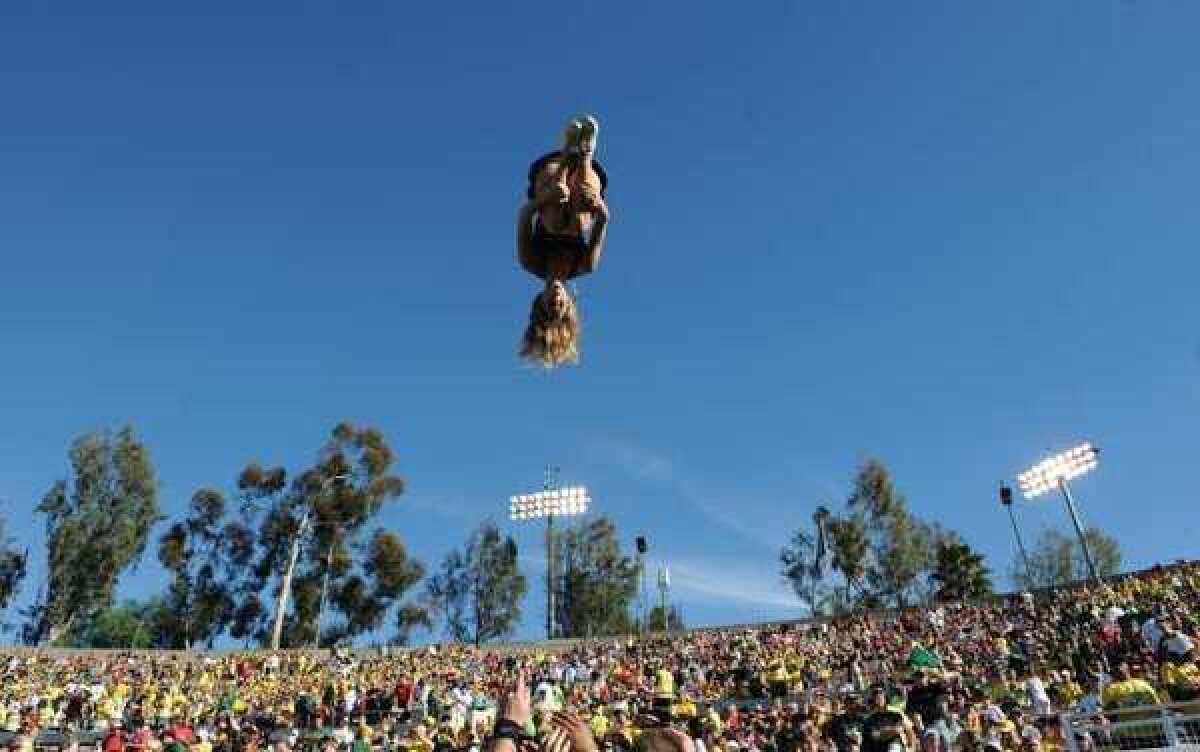Pediatricians call for protections for cheerleaders

- Share via
Laryngitis might once have been the worst injury a cheerleader faced. But cheerleading has become a full-on competitive sport of its own, with injuries to match.
The American Academy of Pediatrics on Monday issued a policy statement to try to ensure that participants – 3.6 million kids ages 6 and older -- get the same care as quarterbacks and pitchers.
“Cheerleading has become extremely competitive in the past few years, incorporating more complex skills than ever before,” said Cynthia LaBella, a pediatric sports medicine specialist and member of the academy’s council on Sports Medicine and Fitness, in a statement issued at the academy’s conference in New Orleans.
She is a co-author of the new guidelines, which call for coaches and schools to develop emergency plans and ensure that cheerleading programs have the same level of coaching, injury surveillance and medical care as other programs.
Only 29 state high school athletic associations recognize cheerleading as a sport, and the National Collegiate Athletic Assn. does not include it as a sponsored sport. That inclusion, the academy said, gives a program protections such as well-maintained practice facilities, certified trainers and physicals.
Most cheerleading injuries are sprains and strains, with head and neck injuries the second most common. Since 2007, there have been 26,000 cheerleading injuries a year, and the sport accounts for 66% of all catastrophic injuries to high school female athletes in the last 25 years, the academy said.
Cheerleading, the academy said, “is one of the highest risk sporting events for direct catastrophic injuries that can result in permanent brain injury, paralysis or death.”
Most serious injuries occur while performing complex stunts such as pyramids, said Jeffrey Mjaanes, co-author of the new guidelines.
The guidelines call for all states to recognize cheerleading as a sport; all participants to have preseason physical exams and access to qualified strength and conditioning coaches. They also seek training for all cheerleaders in spotting others; for pyramid and other stunts to be performed only on a spring or foam floor or on grass; for pyramids to be limited to two people high; for a written emergency plan; and for cheerleaders suspected of suffering a head injury to be removed from participation until cleared by a health professional.
Mary.MacVean@latimes.com
@mmacvean on Twitter
More to Read
Sign up for Essential California
The most important California stories and recommendations in your inbox every morning.
You may occasionally receive promotional content from the Los Angeles Times.











